NEWS
Beware: 10 Locations Where You Shouldn’t Plug in Your Phone
Published
3 months agoon

Shutterstock
Charging your smartphone might seem like the simplest of tasks, yet doing it in the wrong place could turn a routine act into a serious hazard. From potential fires to compromised personal data, the risks associated with improper phone charging are both varied and alarming. Many common charging practices unknowingly expose users to dangers that can have devastating consequences. Here’s a guide to the ten places you should absolutely avoid when plugging in your device, ensuring your safety and that of your smartphone.
Near Water (Bathrooms or Kitchens)

Shutterstock
Charging your phone near water increases the risk of electric shock or electrocution, especially in areas like bathrooms and kitchens where surfaces can easily become wet. Moisture can cause short circuits in the charging equipment, leading to potential sparks or fires. Additionally, using your phone while it’s plugged in and near water sources can be hazardous, as accidental drops into water can lead to severe electrical malfunctions. It’s best to charge phones away from sinks, bathtubs, and other water-prone areas to ensure safety.
On Soft Bedding or Couches

Shutterstock
Charging a phone on soft bedding or a couch can lead to overheating, as these materials trap heat produced by the charging device. This not only poses a risk of damaging the phone’s battery and reducing its lifespan but can also ignite a fire if the temperature gets too high. These areas lack proper ventilation, which is crucial for dissipating heat during charging. It is advisable to place the phone on a hard, flat surface where air circulation is adequate to avoid these risks.
In Direct Sunlight

Shutterstock
Exposing your phone to direct sunlight while charging can significantly increase the device’s temperature, potentially leading to overheating issues. High temperatures can degrade the battery at a faster rate and may cause the phone to shut down temporarily or suffer permanent damage. There’s also an increased risk of the battery swelling or even exploding due to the intensified heat. To prevent such hazards, always charge your phone in a cool, shaded area.
In a Car During Hot or Cold Weather
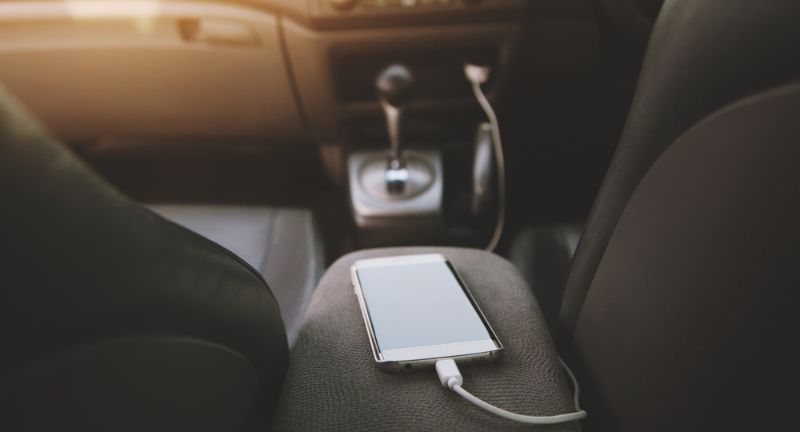
Shutterstock
Charging your phone in a car during extreme temperatures can be harmful to its internal components. In hot weather, the enclosed space of a car can amplify heat buildup, pushing the phone’s temperature to dangerous levels. Conversely, in cold weather, the battery can drain faster and may become less efficient, potentially damaging the phone’s longevity. It is safer to charge the phone within temperature-controlled environments to avoid subjecting it to such extreme conditions.
Using Unofficial or Damaged Chargers
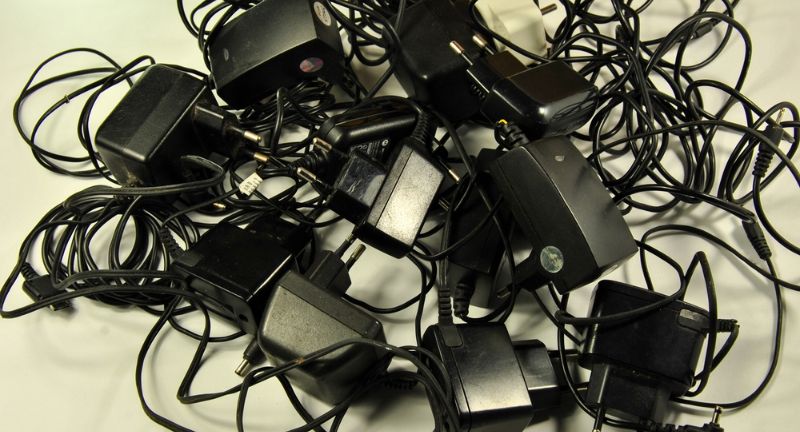
Shutterstock
Utilizing unofficial or damaged chargers poses significant risks, including electrical malfunctions and fire hazards. These chargers may not meet safety standards and can deliver incorrect voltage or current, damaging the phone and possibly leading to battery explosions. Additionally, poor-quality components in such chargers can fail, resulting in sparks or short circuits. Always use the charger provided by the manufacturer or certified alternatives to ensure safety.
At Airports or Public Charging Stations
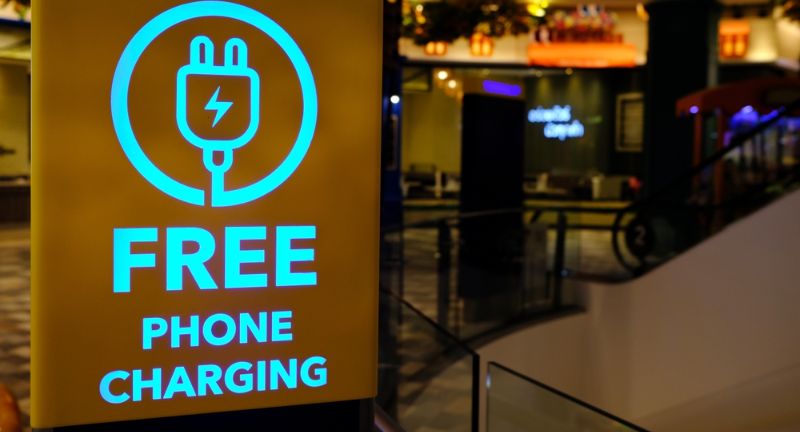
Shutterstock
Charging your phone at public stations like those found in airports can expose it to security vulnerabilities, including data theft or malware installation through “juice jacking.” Furthermore, the frequent use and varying electronic outputs of public charging stations can lead to inconsistent power delivery, which can harm your phone’s battery. There is also a risk of forgetting your device or having it stolen when it is left unattended. It’s advisable to use personal battery packs or secure charging methods while traveling.
On Carpets or Rugs

Shutterstock
Charging a phone on a carpet or rug can pose fire risks similar to those of soft bedding, as these materials can overheat and potentially ignite from the heat generated by the phone’s charger. Carpets and rugs also tend to accumulate dust and debris that can obstruct the phone’s ventilation ports, exacerbating overheating issues. Furthermore, walking over these surfaces while the phone is charging might lead to physical damage from tripping over or pulling on the cord accidentally. Charging on a non-flammable, stable surface is safer and reduces these risks.
Close to Flammable Products
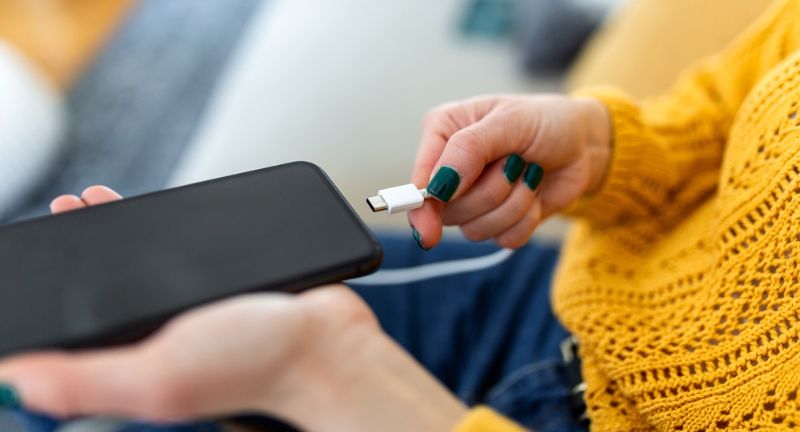
Shutterstock
Charging near flammable products such as papers, curtains, or cleaning supplies can be extremely hazardous. In the event of a short circuit or the charger emitting sparks, there is a high risk of igniting these materials, leading to a potential fire disaster. Such areas also often lack adequate ventilation, contributing further to the risk of overheating and fire. It’s crucial to keep the charging area clear of any materials that could easily catch fire.
In Crowded Areas

Shutterstock
Charging your phone in crowded areas can lead to damage from being knocked over or stepped on, especially if the area is congested and the phone is plugged into a low-lying outlet. The cord can also become a tripping hazard, potentially harming others and disconnecting the phone suddenly, which could damage the charging port. Additionally, crowded places may increase the risk of theft or tampering with your device when left unattended. It’s better to charge your phone in a secure, less trafficked area.
While Using Heavy Applications
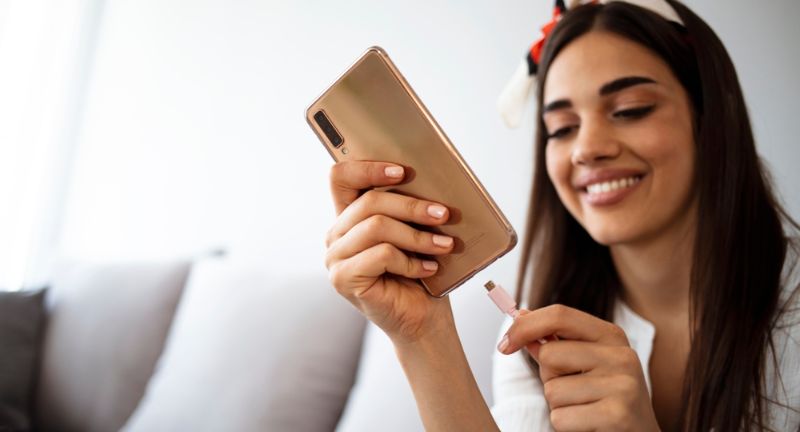
Shutterstock
Charging your phone while using heavy applications or during extended gaming sessions can strain the battery, as it attempts to manage both the power intake and the high demand from intense processing. This can lead to significant heat generation, potentially causing the phone to overheat and reducing the overall battery life. Continuous high performance while charging can also stress the phone’s hardware, leading to decreased efficiency and potential long-term damage. It is advisable to avoid demanding tasks on your phone while it charges, to prolong battery life and maintain device health.
Conclusion
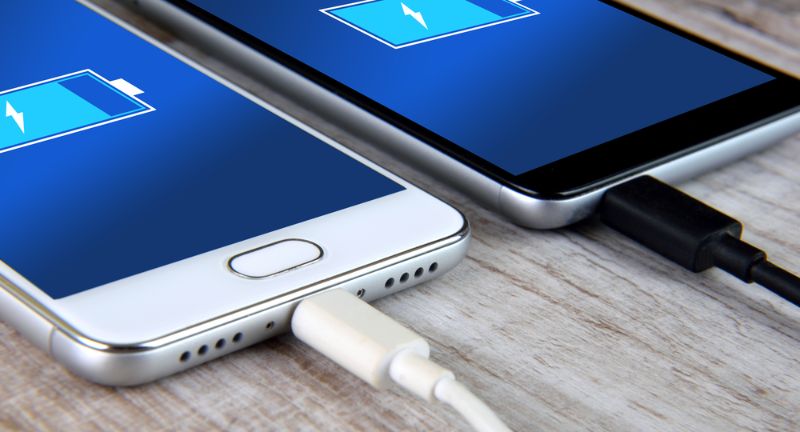
Shutterstock
Being cautious about where and how you charge your phone is not just about prolonging the life of your device, but also about ensuring your safety. By avoiding the ten locations highlighted, you can protect yourself from potential hazards such as fires, electrical issues, and data theft. Remember to use official chargers, maintain good charging habits, and be aware of your surroundings when charging your phone. Adopting these simple precautions can help keep both you and your device safe in the long run.
Related Topics:

More From Financially+
-


17 Powerful Reasons You Should Make the Leap and Move…
-
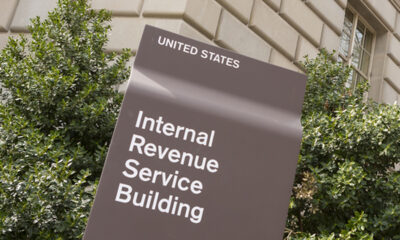

IRS Introduces New Direct Filing System, Challenging TurboTax’s Market Leadership
-


The Million-Dollar Myth: Retire Rich Without the Fortune
-


16 Signs Someone Is Way More Broke Than They Seem
-


23 Policies Democrats Would Relentlessly Enforce If They Had Unlimited…
-


13 Reasons Why Living on the U.S. Median Income Feels…
-


Universal Basic Income: 14 Reasons Everyone Deserves Free Money
-


20 Policies Conservatives Support That Are Wrecking The Middle Class
-


19 Startling Reasons Why Moving to Texas Is Probably a…